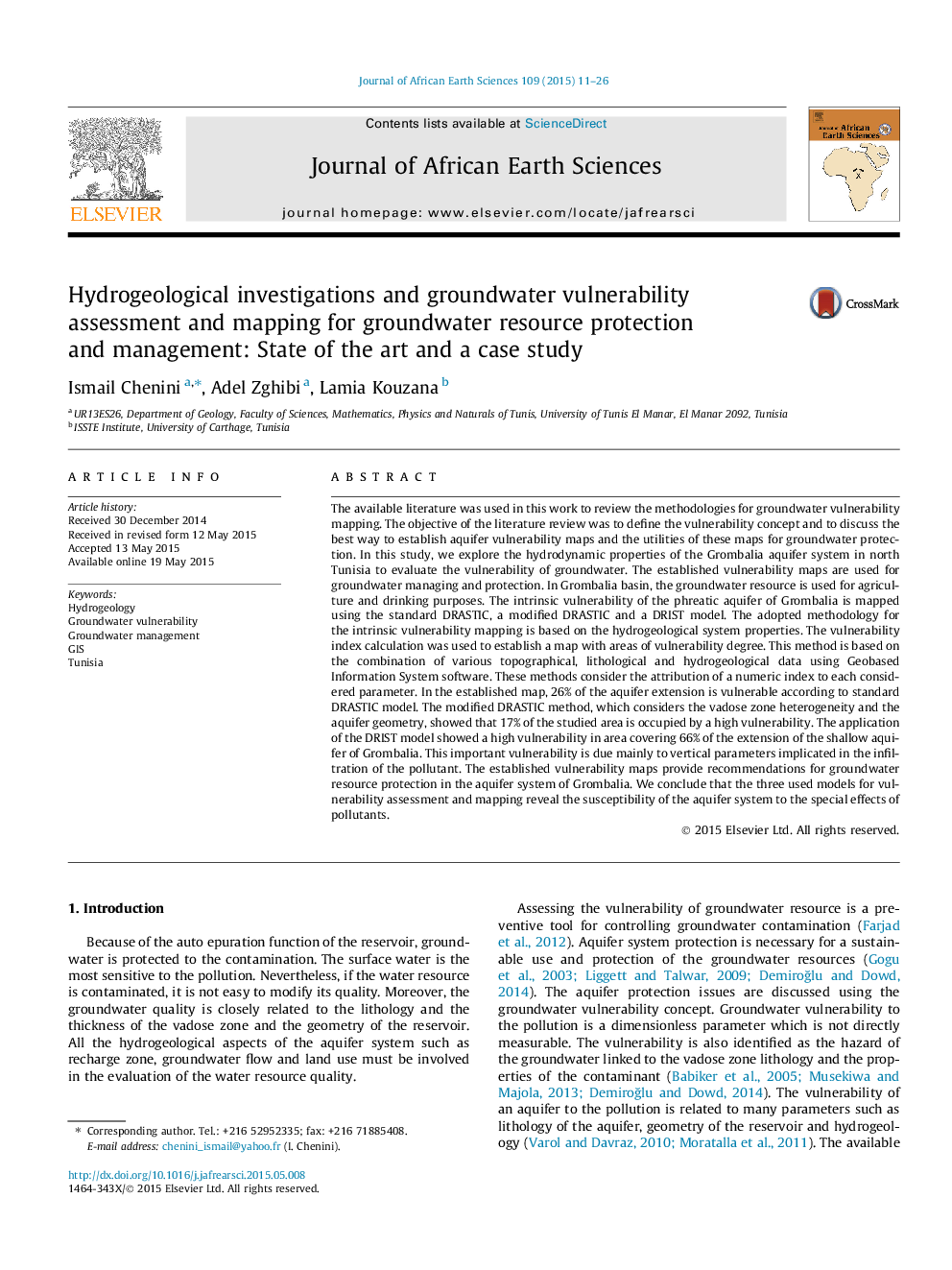| کد مقاله | کد نشریه | سال انتشار | مقاله انگلیسی | نسخه تمام متن |
|---|---|---|---|---|
| 4728631 | 1640198 | 2015 | 16 صفحه PDF | دانلود رایگان |
• The vulnerability mapping is a powerful tool for groundwater protection.
• Vulnerability mapping utilities for groundwater resources management are reviewed.
• DRASTIC, modified DRASTIC and DRIST are used to establish vulnerability map.
• Vulnerability maps provide recommendations for the management of the groundwater.
The available literature was used in this work to review the methodologies for groundwater vulnerability mapping. The objective of the literature review was to define the vulnerability concept and to discuss the best way to establish aquifer vulnerability maps and the utilities of these maps for groundwater protection. In this study, we explore the hydrodynamic properties of the Grombalia aquifer system in north Tunisia to evaluate the vulnerability of groundwater. The established vulnerability maps are used for groundwater managing and protection. In Grombalia basin, the groundwater resource is used for agriculture and drinking purposes. The intrinsic vulnerability of the phreatic aquifer of Grombalia is mapped using the standard DRASTIC, a modified DRASTIC and a DRIST model. The adopted methodology for the intrinsic vulnerability mapping is based on the hydrogeological system properties. The vulnerability index calculation was used to establish a map with areas of vulnerability degree. This method is based on the combination of various topographical, lithological and hydrogeological data using Geobased Information System software. These methods consider the attribution of a numeric index to each considered parameter. In the established map, 26% of the aquifer extension is vulnerable according to standard DRASTIC model. The modified DRASTIC method, which considers the vadose zone heterogeneity and the aquifer geometry, showed that 17% of the studied area is occupied by a high vulnerability. The application of the DRIST model showed a high vulnerability in area covering 66% of the extension of the shallow aquifer of Grombalia. This important vulnerability is due mainly to vertical parameters implicated in the infiltration of the pollutant. The established vulnerability maps provide recommendations for groundwater resource protection in the aquifer system of Grombalia. We conclude that the three used models for vulnerability assessment and mapping reveal the susceptibility of the aquifer system to the special effects of pollutants.
Figure optionsDownload as PowerPoint slide
Journal: Journal of African Earth Sciences - Volume 109, September 2015, Pages 11–26
